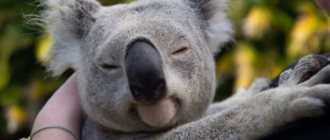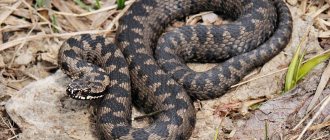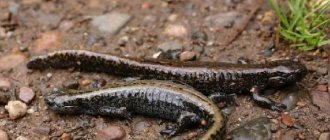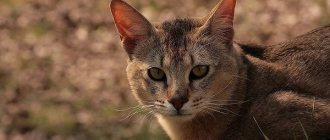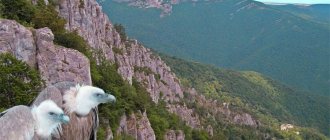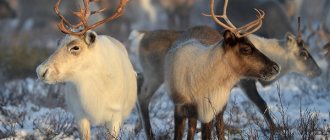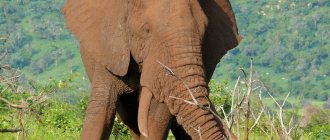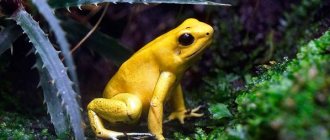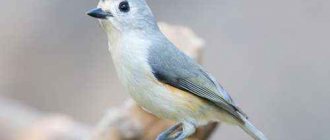The world's tropical rain forests are home to some of the rarest and most unique species of flora and fauna found nowhere else on our planet. It is the most diverse biome on Earth and supports a huge variety of fauna. One of the reasons for such a wide variety is the constant warmth. Tropical rainforests also contain vast reserves of water (2,000 to 7,000 mm of rainfall annually) and a variety of food sources for animals. Many small animals, including monkeys, birds, snakes, rodents, frogs, lizards and insects, found in tropical forests have never set foot on land. They use tall trees and undergrowth for shelter from predators and to find food.
Because there is a huge diversity of animals (40-75% of Earth's animal species) competing for food, many species have adapted to eat certain foods that others do not. For example, toucans have a long, large beak. This adaptation allows the bird to reach fruits on branches that are too small to support the bird's weight. The beak is also used to extract fruit from trees.
Sloths use behavioral adaptations and camouflage to survive in the rainforest. They move very, very slowly and spend most of their time hanging upside down. Blue-green algae grows on their fur and gives sloths their greenish color and also protects them from predators.
This article examines the structure of the rainforest and some of the animals that live in its layers, from the forest floor to the upper layer.
black-backed tapir
In tropical jungles, that is, tree and shrub thickets “saturated” with cereal grasses with rough stems, the black-backed tapir settles near water bodies. The animal can walk along their bottom.
A tapir walks, holding his breath. What appears to be a nose is an elongated upper lip. It turned into a kind of trunk. It is convenient for them to pick aquatic plants and shoots near water bodies.
Black-backed tapirs are jungle book animals with short legs and necks, a squat and plump body. Animals are also weak-sighted. It is not surprising to lose sight over several geological epochs.
Tapirs are considered jungle dinosaurs, one of the most ancient animals. Almost without seeing, they navigate by smells. The black-backed tapir has an excellent sense of smell.
In the photo there is an animal tapir
Red-bearded (copper) jumper
It was included in Interesting Rainforest Animals only 3 years ago. A new species of monkey was discovered in the Amazon jungle in 2014 during an expedition organized by the World Wildlife Fund.
In the “lungs of the planet” they found a 441-in new species. There is only one mammal among them - the red-bearded jumper. The monkey is classified as a broad-nosed monkey. Presumably, there are no more than 250 jumpers in the world.
Animals are monogamous; once they form a pair, they do not cheat and live separately with their children. When the jumpers are happy with each other, they purr, which makes them stand out from other monkeys.
In the photo there is a copper jumper monkey
Proboscis
This monkey is endemic to the island of Borneo. Like other jungle herbivores, the proboscis monkey spends most of its time in trees. Undergrowth in tropical forests is sparse.
Its nutritional base is not enough for everyone who eats vegetation and fruits. Therefore, insects and predators concentrate in the jungle undergrowth. Others hide upstairs, where it is safe and satisfying.
The proboscis monkey has been identified as a separate species from the macaque order due to its modified olfactory organ. In males it is swollen, hanging down like a water balloon. Female proboscis whales have a different structure. The nose of females is also elongated, but turned up.
Among monkeys, proboscis monkeys also stand out for their ability to move on two legs. Typically, this is what apes with a highly organized social life do within their communities.
At the same time, there are parameters in which jungle animals, proboscis monkeys, are inferior to monkeys. The long tail of long-nosed animals, for example, has lost its flexibility and is almost never used as a hook when jumping between trees and branches.
In the photo there is a proboscis monkey
Okapi
This artiodactyl is a member of the giraffe family, although the okapi does not have the same long neck as its close relative, the giraffe. This is a fairly large animal. Its body length is approximately 2 m. Height at the withers is 1.5-1.7 m, weight is about 250 kg. Okapi inhabits tropical African forests, where it feeds on shoots, leaves and fruits of various plants. This animal became known to Europeans only at the beginning of the 20th century.
Tewangu (slender loris)
These wild jungle animals are classified as lemurs. The animals live in the jungles of India and Sri Lanka. In fact, this is what the Tevang is called here. Outside its habitat, the animal is called the slender loris. The animals are indeed thin and graceful. Thin and pointed noses give the lemurs' faces a curious, cunning expression.
Lorises have large, round eyes. They complement the trick with surprise. It seems that the animal is slyly asking: “Did I do this?” Among the typical actions of the Tevang, we note marking their territory with urine, cleaning the fur with an elongated claw, and eating fruit.
Speaking of the slender loris, we need to add information about the jungle. Animals here are mainly nocturnal. During the day the heat is sweltering, and the light improves visibility. The goal of many jungle animals is to hide from predators. Therefore, Tevangus come out to eat fruits and leaves after sunset. Lemurs sleep during the day.
Tevangu slender loris
Herbivorous dracula bat
Looks scary, but he's a vegetarian. Dracula is a bat. On its muzzle there is a skin outgrowth called the nasal leaf. Combined with wide-set, slanted eyes, the growth creates an intimidating appearance.
We add large and pointed ears, compressed lips, bluish coloring, and bonyness. It turns out to be an image from nightmares. Actually, herbivorous devils are active at night. During the day, animals hide in the crowns of trees or caves.
Herbivorous bat Dracula
Bongo antelope
Forest antelope. The dorsal comb made of wool is interesting. It resembles a fish fin or a mohawk. Among other forest antelopes, the bongo is the largest, reaching 235 centimeters in length and 130 centimeters in height. The largest individuals live in Kenya. Bongo, in general, is an African jungle animal.
Photos of antelopes represent ungulates with arched backs, brown-red color with yellow-white transverse stripes. All photographs contain horns. Both males and females wear them among bongos. The bony outgrowths are shaped like a lyre and twisted into a spiral.
Bongo horns reach a height of 1 meter. In females, as a rule, the outgrowths do not exceed 70 centimeters. You can also determine the sex of an antelope by its lifestyle. Females with offspring gather in groups. Males survive in splendid isolation.
Although female bongos have shorter horns, they are needed for dominance in groups. The leader of the herd becomes the individual with the longest outgrowths. It turns out that bongos still look for masculine traits in their leader.
In the photo there is a bongo antelope
Possibly lost
In Latin, the name of the species is Alabates amissibilis. This is the smallest frog. The species is on the verge of extinction. The difficulty of detecting it is also related to its size. Alabates are frogs the size of your pinky fingernail.
They are beige-brown with stripes on the sides. Despite their tiny size, frogs of the species are poisonous, so they are not suitable for French cuisine, even if it were not for their protected status.
The smallest frog Alabates amissibilis
Bengal tiger
The species inhabits the Indian jungle. The fauna of the local forests is complemented by only 2,000 Bengal tigers. About 500 more live in Bangladesh. The total population of the species is 3,500 cats.
This became the reason for listing the Bengal tiger in the Red Book. Almost 1,000 individuals live in zoos. Some animals kept in captivity are albinos.
The Indian tigers differ from other tigers not only in appearance, but also in behavior. Let us remember, for example, Amur cats. The latter hunt silently. Bengal tigers go on the “warpath” with a menacing roar. Sometimes it is directed towards people. Cases of attacks on them have been recorded. There are no cannibals among the Amur population.
The Bengal tiger is slightly smaller than its Russian relative and is brighter in color. In addition, Indian predators have shorter fur. However, with an inexperienced eye it is difficult to distinguish a Bengal tiger from others.
Bengal tiger
True, there are specimens that do not look like a tiger. So, at the end of the 19th century, an individual with black fur was shot. No other dark animals were seen in India or Bangladesh. But white tigers are specially bred in captivity. There is a demand for albinos; circuses and zoos pay more for them.
Kirk's colobus
A rare representative of the monkey family, living in the African jungle. Males of this monkey weigh about 12 kg, and females - 8-10 kg. The back color of the colobus is orange or reddish. A black stripe runs along his arms and shoulders. The face of the colobus is also black. It feeds on shoots, seeds, unripe fruits, and young leaves. Colobus rarely consumes ripe fruits due to the fact that its stomach practically does not digest sugar.
Kirk's colobus is a species listed as "vulnerable" in the Red Book of the International Union for Conservation of Nature.
Bull Gaur
It is often forgotten when talking about what animals live in the jungle . Meanwhile, the gaur is the largest bull on the planet. A few individuals are lost in the jungle. In all of China, for example, only 800 gaurs were counted. Slightly more in India. The Vietnamese and Thais are also proud of gaurs.
The length of bulls of this species exceeds 3 meters. The height of the ungulates is more than 2 meters. The animals weigh more than a ton. Usually this is 1,300 kilograms. The horns also add menacing appearance to the gauru. They are crescent-shaped, 90-100 centimeters.
The small number of gauru bulls is associated with the characteristics of reproduction. Females give birth to only 1 calf. It survives on its mother's milk for a year, and reaches sexual maturity only at 3 years of age.
At the same time, a bull weighing up to 1 ton can be killed by a tiger, especially a group of cats. If the gaur manages to escape danger and grow to an untouchable size, the ungulate lives for about 30 years.
In the photo there is a gaur bull
Jaco
This is a bird of the parrot family, which is also called the gray parrot. Its body length is 30-35 cm, tail length is 8 cm. Gray has a black curved beak and ash-gray feathers. Only on the tail the color of its plumage sharply changes to red-purple. The life expectancy of Grays is 60-98 years. This parrot has an exceptional ability for onomatopoeia. In addition to pronouncing words, he can be taught to whistle various melodies.
Monkey-eater eagle
This is the largest eagle in the world. The bird lives mainly in the jungles of the Philippines. The eagle has no competitors in them. The bird feels at ease, flying up to a meter. The wingspan of the predator is 2 meters. The weight of the animal does not exceed 7 kilograms. More difficult to lift into the sky.
Philippine eagles hunt, as the name suggests, monkeys. For one pair with a chick, an area of 30-40 square kilometers is needed. Smaller holdings cause birds to go hungry.
As the planet's jungle areas are rapidly shrinking, harpy ape-eaters are in danger of extinction. An eagle sanctuary has been created on the island of Cabuaya. The area of the protected zone is 7,000 hectares.
Philippine monkey-eater
river dolphin
Like other dolphins, it is a cetacean, that is, it is a mammal. Animals grow up to 2.5 meters and 200 kilograms. These are the largest river dolphins in the world.
In addition, they differ in color. The backs of the animals are gray-white, and the undersides are pinkish. The older the dolphin, the lighter its top. Only in captivity the endemic does not become snow-white.
Amazon dolphins live with humans for no more than 3 years. Puberty occurs at 5. So, zoologists did not expect any offspring in captivity and stopped torturing the animals. As you understand, there are no Amazonian endemics in any third-party dolphinarium in the world. In their homeland, by the way, they are called inia, or buto.
River dolphin or inia
Wallaby
Wallabies inhabited the Australian jungle. Nature and animals of the continent present surprises. Thus, female wallabies can control the process of childbirth. In unfavorable conditions, childbirth is postponed until better times.
Wallabies consider the best “times” not only for the mild climate and abundance of food, but also for the dense forests. The animal belongs to the kangaroo family, but lives in trees.
Wallabies are medium-sized kangaroos. The weight of the animal is approximately 20 kilograms, and its height is 70 centimeters. Otherwise, the wallaby resembles a gigantic kangaroo. The latter lives on the plains and, due to its mass, is not so jumping.
A wallaby overcomes 13-15 meters in a jump. They have subspecies. Not everyone lives in the jungle. There are mountain and swamp kangaroos. The appearance of the animals is identical.
Like other kangaroos, wallabies are caught for their meat. There is little demand for it in Australia, but Russia is one of the main importers. There are a lot of kangaroos in Australia, the meat of the animals is cheap due to the lack of domestic demand. Russians purchase inexpensive and tasty raw materials for sausage production. True, kangaroo meat is rarely indicated in their composition.
Pictured is a wallaby
Rainforest Canopy Dwellers
A tropical canopy is otherwise called a canopy. It is composed of tall, broad-leaved trees. Their crowns form a kind of roof over the litter and undergrowth. The height of the canopy is 35-40 meters. Many birds and arthropods hide in the treetops. There are 20 million species of the latter in the tropical canopy. There are fewer reptiles, invertebrates and mammals at altitude.
Kinkajou
Represents the raccoon family. Kinkajou lives in America. In the tropics, the animal settles in the crowns of trees. The kinkajou moves along their branches, clinging to its long tail. Despite the slight similarity and lack of relationship with clubfoot, the animals are called tree bears. It's about diet. Kinkajou loves honey. The animal obtains it using its tongue. It reaches 13 centimeters in length, allowing it to lick into the hive.
Kinkajous are easily tamed, very friendly and are often kept at home.
Malayan bear
Among the bears, he is the only one who almost never descends to the ground; he lives in the trees. The Malayan clubfoot is also the smallest in its order. The bear's fur is shorter than that of other Potapychs. Otherwise, representatives of the Malayan species would not be able to live in the tropics of Asia. Among bears, the Malayan clubfoot has the longest tongue. It reaches 25 centimeters. The animal's claws are also the longest. How else to climb trees?
Jaco
One of the smartest parrots. Like a real intellectual, Gray is modestly “dressed.” The bird's plumage is gray. Only the tail has red feathers. Their shade is not flashy, but rather cherry. You can see birds in the jungles of Africa. Animals of the continent's tropical forests are successfully kept in captivity and often become heroes of the news.
Thus, a Gray Gray named Baby from the USA remembered the names of the robbers who broke into his owner’s apartment. Birds gave the thieves' information to the police. Jaco, who knew about 500 words in different languages, is included in the Guinness Book of Records. The bird spoke in coherent sentences.
Koata
Otherwise called spider monkey. The animal has a tiny head, a massive body against its background, and long, thin limbs. When the koata extends them between the branches, it looks like a spider waiting for prey.
The black, shiny fur of the animal, like fluff on the bodies of arthropods, is also confusing. The coata lives in South and Central America. With a 60-centimeter body length of the monkey, the length of its tail is 90 centimeters.
Koats very rarely come down to the ground, sometimes spider monkeys fall and get injured, which heal quickly
Rainbow toucan
A large bird up to 53 centimeters long. With its massive and long beak, the toucan reaches for fruits on thin branches. If a bird sits on them, the shoots will not survive. A toucan weighs about 400 grams. The animal's beak is colored green, blue, orange, yellow, and red.
The body is mostly black, but there is an extensive lemon-colored patch on the head with a red scarlet border on the neck. Even the irises of the toucan’s eyes are colored, turquoise. It becomes clear why the species is called rainbow.
The colorful appearance of the toucan is combined with the fruit variety of the tropics. However, the bird can also feast on protein foods, catching insects and tree frogs. Sometimes toucans eat the chicks of other birds.
Golden-helmed kalao
The largest among the birds of the tropics of Africa. The bird weighs approximately 2 kilograms. The golden-helmeted animal is named due to the feathers sticking out on its head. They seem to be raised, forming a semblance of armor from the times of the Roman Empire. The color of the feathers is golden.
There is a patch of bare skin on the neck of the kalao. It is slightly drooping and wrinkled, like that of a vulture or turkey. The kalao is also distinguished by its massive beak. It is not for nothing that the bird belongs to the hornbill family.
Long beaks make it convenient for birds to collect fruits from branchy trees.
Three-toed sloth
the slowest animals in the rainforest The answer is obvious. On land, sloths move at a maximum speed of 16 meters per hour. Animals spend most of their time on the branches of trees in the African jungle. There are sloths hanging upside down. The animals sleep most of the time, and leisurely chew the leaves for the rest.
Sloths not only feed on vegetation, but are also covered in it. Animal fur is covered with microscopic algae. That's why sloths are greenish in color. Algae are plants of water bodies. From there the sloths took “tenants”. Slow mammals are good swimmers. During the rainy season, sloths have to swim from tree to tree.
Madagascar suckerfoot
From the name it is clear that the animal lives only in Madagascar. The island's endemic species has suckers on its paws. Some bats have similar ones, which the sucker-foot is similar to.
However, in the endemic the suckers are attached directly to the skin. Other mice have transition pins. The suction cups are moistened with an adhesive substance. It is produced by special glands on the body of the endemic.
Scientists cannot understand the etymology of the origin of the species. Suckerfoots, in general, are poorly studied. It is believed that the animals attach their paws to the leathery leaves of palm trees. When rolled up, they make excellent shelters. The suckers look for them near the water. The animal was not seen far from water bodies.
The suckerfoot is miniature. The animal is 4.5-5.7 centimeters in length. The animal weighs approximately 10 grams. About 2 of them are in the ears. They are larger than the sucker's head and naked. The leathery membraned wings on the front legs are also not covered with hair. The rest of the body is covered with a brown, dense “fur coat”.
Pictured is a Madagascar suckerfoot
Galagoidae
Thick-tailed galago
Representatives of this family of primates are the most numerous in Africa, they are found in almost every large forest area. The most common species is the thick-tailed galago. The length of its body is 26-47 cm, the length of the tail is 29-55 cm. The thick-tailed galago has a long fluffy tail, which serves as a balancer when jumping from branch to branch. Its diet consists of fruits, berries, seeds, flowers, insects, small reptiles and birds. These monkeys live in small groups in a strictly limited territory, which is marked with urine and secretions of special glands.
Share link
Tetra Congo
This is a fish of the characin family. There are almost 1700 species. Congo is found only in the basin of the river of the same name. The fish has a bright blue-orange coloring. It is expressed in males. Females are “dressed” more modestly.
The fins of the species resemble the finest lace. The Congo reaches 8.5 centimeters in length and is peaceful. The description is ideal for aquarium fish. The endemic is indeed kept at home. Congos love dark soil. One fish needs about 5 liters of soft water.
Tetra Congo fish
Animals of hot countries: names, list, brief description
Let's look at the most interesting animals of hot countries and find out the features of their life activity:
- Hippopotamus. Artiodactyl, well-fed animal. The hippopotamus's height is no more than 1.5 in height, and its body weight reaches 3-4 tons. The animal's short neck turns into a wide, long muzzle. The eyes and ears are disproportionately small on the top of the skull.
- Herbivores consume up to 40 kg of greens per day. Through a wide open mouth, hippos get rid of large amounts of gas in the stomach.
- Adult hippos are able to hold their breath for 4-5 minutes, which helps them move underwater. When moving in water, hippos press their forelimbs to their body, and push off the ground at the bottom with their hind limbs.
- Despite their large volumes, hippos are capable of speeds of up to 40-50 km per hour.
Family Facts
- Crocodile. A semi-aquatic wild animal that lives in all countries with a warm and humid tropical climate. Unique representatives of the subclass of archosaurs, which included dinosaurs. An adult individual gains weight up to 700 kg and lives up to 100 years. The body length grows to 3-5 m, in giants up to 7 m. The long tail has 35-37 vertebrae and performs motor, steering and heat exchange functions.
- The crocodile's limbs have webbed fingers. In water the animal moves 2 times faster than on land. The skin of a crocodile is covered with scutes, under which there are horny plates that protect the body like a shell.
- In the huge elongated mouth of the crocodile there are up to 100 sharp cone-shaped teeth. The eyes, nostrils and ears are located on the top of the head. This feature allows the crocodile to lie under water, exposing only its organs of vision and smell.
Dangerous About crocodiles
- Elephant. The largest animals that live on land. The weight of elephants reaches from 3 to 7 tons. Life expectancy is up to 70 years. You can determine the age of an elephant by its tusks - the larger they are, the older the animal. While running, elephants reach speeds of up to 50 km/h.
- Elephants have a unique adaptation for life - a trunk , the length of which in an adult reaches 3 m. With its help, the animal breaks off young branches, collects herbs, picks fruits, sucks up water, carries weights, and makes trumpeting sounds. To satisfy its hunger, an elephant needs to eat about 300 kg of food and drink about 200 liters of water.
- The elephant's body is covered with thick, wrinkled skin. On the head there are large and thin ears, with the help of which the animal regulates heat exchange.
- Animals love to swim. Thanks to their trunk, they can stay under water longer. Elephants are considered one of the most intelligent mammals on Earth.
Senior and Junior Interesting indicators
About baby elephants and adults
- Zebra. An African variety of horse with a short, stiff mane. A unique feature of the animal is its striped black and white color, and each individual has its own unique pattern. Foals are born with tan stripes that darken as they mature. In a herd, babies recognize their mothers by their unique patterns.
- Black and white stripes help zebras protect themselves from predators, preventing the enemy from focusing on a specific target. When a predator appears, animals make sounds similar to barking. In a fight, the zebra strikes with its hind hooves and bites with its teeth.
- African zebras eat plant foods and are busy with their food throughout the day. The weight of the animal reaches 30 kg, life expectancy is 25-30 years. Zebras are divided into 3 types - desert, lowland, mountain. Desert zebras are listed in the Red Book.
Photo
About the striped resident
- Rhinoceros. A large African animal with a huge pointed horn on its nose. A rhinoceros has a large depression between its nose and forehead. The eyes are located on the sides and are a weak organ. A rhinoceros cannot take in an object of vision with both eyes. Animals survive thanks to well-developed hearing and sense of smell.
- The size of the land animal reaches 3 tons. Wrinkled skin has a gray-brown tint. The massive limbs have three hooves, leaving easily recognizable marks. Rhinos move alone. They choose a specific territory for their habitat and jealously guard it. Rhinoceroses unite only for mating.
With baby About rhinoceros
- A lion. A large wild cat that, thanks to its mass, speed and mental abilities, is able to withstand cattle. Lions are at the top of the food chain, so they are rightfully called the “king of beasts”. The animal stands out for its loud, deafening roar. The weight of an adult is over 200 kg.
- Lions live in groups, which consist of several female relatives with one or more lions at the head. The male has a huge shaggy mane, which creates a fearsome appearance for enemies. Lions have a dark tassel at the end of their tail. The lioness has no mane and a graceful, graceful physique.
About females and males
- Giraffe. The tallest animal on the planet. The growth of the animal is due to its long legs and length of neck. The total height of the animal is 5-6 m, the body weight of an adult is more than 1000 kg. Thanks to their elongated limbs, giraffes jump over barriers up to 1.5 m high. Animals avoid swampy and watery areas.
- The giraffe's long, muscular tongue helps the animal obtain plant food and clean its face. The ears are located on the sides of the head and turned horizontally. The top of the head is decorated with a pair of small horns covered with wool. Large eyes are decorated with fluffy eyelashes. The animal's skin is colored with unique brown spots, separated by white cobwebs.
- To restore strength, a giraffe needs 2 hours of sleep a day. The animal's lifespan is up to 25 years.
With a long neck
Data
- Camel. A large mammal adapted for life in arid conditions. The animal's body is covered with dense fur, which protects it from both heat and cold. On the back of a camel there are two humps with fat deposits that act as energy reserves.
- The rough, fleshy oral cavity of a camel is adapted for processing tough vegetation. The structure of the large eyes provides protection against sand storms. Two-toed feet help to overcome kilometers of rocky and sandy surfaces. The weight of an adult reaches 700 kg. Height up to 2.5 m.
Humpback
About camels
- Leopard. A large predator with a slender and strong body. At the end of the body there is a long, hairless tail. The thick fur is colored with yellow spots on a black background and performs a camouflage function. Fast legs, excellent vision and excellent hearing help the animal to hunt. The main weapon of a wild cat is its sharp teeth and claws.
- The leopard quickly and easily climbs trees, where it often ambushes or roosts. Animals move alone and occupy a certain territory. During the period of unsuccessful hunting, leopards feed on mice, lizards, insects, monkeys, and fish.
- The leopard often drags its food supplies up a tree. The weight of an adult leopard is 60-80 kg, life expectancy is up to 10 years. Deforestation has significantly reduced the leopard population, so the animal is listed in the Red Book.
Handsome
About fast and dangerous
- Antelope. An artiodactyl animal with long horns reaching 1.5 m. The horns can be smooth, twisted, with a large number of rings. The main habitat is South Africa.
- The short, stiff fur of antelopes comes in different colors - brown-yellow, gray, red with white stripes. Antelopes feed mainly on plant foods. The hinged structure of the hip joints allows animals to stand on their hind limbs to reach tree branches.
- The timid animal quickly reacts to danger and reaches speeds of up to 60 km/h. Life expectancy is from 12 to 20 years.
Animal
Do you know?
- Kangaroo. Marsupials from Australia. Thanks to the powerful hind limbs, kangaroos move quickly and jump up to 10 m. The forelimbs end in five fingers with claws and provide a grasping function. Herbivorous kangaroos lead an active nocturnal lifestyle. Animals adapted to drought can go without water for several months. Kangaroos make many sounds in the form of grunting, sneezing, and hissing.
- Kangaroo cubs grow up to a year in the mother's pouch, located in the lower abdomen. The mother's nipples are also located there, from which milk comes. The body length of adult kangaroos is up to 1.5 meters. Body weight reaches 100 kg. The skin is covered with soft, thick fur of different shades. Kangaroo meat and skin are considered a valuable commodity, especially among the natives.
With baby
Interesting
- Koala. Residents of Australia who resemble little bear cubs. The small animal sleeps in trees for about 20 hours a day. The special arrangement of their fingers and long nails allow them to easily grasp tree trunks. Koalas feed on plant foods. Sharp incisors easily cut foliage and young branches. They prefer eucalyptus trees as food and habitat. Before cutting the leaves of a eucalyptus tree, the koala, using its sensitive sense of smell, checks it for the concentration of toxic substances. When koalas go to water, they often come to artificial pools, where they die due to carelessness.
- The koala's body is covered with thick short hair of gray-smoky shades. Koalas lead a sedentary lifestyle. Body length is no more than 80 cm. Koalas have low intellectual activity, which prevents them from surviving in unforeseen situations. Koalas are considered the safest and most defenseless animals in the world. In anticipation of danger, koalas make sounds similar to the cry of a child.
Cuties
Interesting things
- Monkey. This group of animals includes gorillas, orangutans, chimpanzees and other representatives of small and large sizes. Numerous species of monkeys are found on all hot continents. The body of monkeys is covered with sparse hair. The dental system is close to the structure of the human.
- Monkeys choose trees as their habitat; a long tail and long limbs help them navigate.
Funny Good to know
- Smart animals often resemble humans in their behavior. Humanoid animals make conscious, thoughtful movements. Communication between individuals occurs through facial expressions and sounds.
- Monkeys feed on plant foods, insects, small birds and animals. Depending on the species, the weight of monkeys varies from 200 g to 250 kg. Body length is from 15 cm to 2 m. Life expectancy is 30-40 years.
We have also prepared the following presentations on the topic:
- "They defended their homeland"
- Poverty and Wealth
- Viruses - biology
- Resident, wintering and migratory birds
Panda
Not a single list of “ names of tropical forest animals ” can do without it. Endemic to China, it lives in bamboo groves and is a symbol of the country. In the West they learned about it only in the 19th century.
Zoologists in Europe argued for a long time whether to classify pandas as raccoons or bears. Genetic tests helped. The animal is recognized as a bear. He leads a secretive lifestyle in three provinces of the PRC. These are Tibet, Sichuan, Gansu.
Pandas have 6 toes on their paws. One of them is just appearance. It is actually a modified carpal bone. The number of teeth grinding plant food is also off the charts.
A person has 7 times less. That is, pandas have more than 200 teeth. They are active about 12 hours a day. Only 1/5 of the leaves eaten are absorbed. Considering that pandas do not hibernate, the tropical forests are saved only by the rapid growth of bamboo, a couple of meters per day, and the small number of bears themselves.
We will end the trip in Australia. Its tropical zone is also affected. The continent is deserted. Tropical forests grow only along the coasts. Their eastern part is included in the UNESCO World Heritage Site. Let's find out what these wonders are for.
Payara - mackerel-shaped hydrolic
0
Source:
One of the payara's nicknames is “vampire fish,” and there is a reason for this. Instead of teeth, she has daggers, and two huge fangs, 10-15 cm long, protrude from her lower jaw. The fangs are so long that the upper jaw is equipped with special slots for them. Payara uses its razor-sharp teeth to pierce its prey and usually swallows it whole. But sometimes he chews it up piece by piece - as the chip falls. It feeds on any living fish, especially piranhas. Payara is a commercial fish and is also an object of sport fishing. When trying to pull her out of the water, she desperately resists, which adds to her interest in the eyes of fishermen.
sun bear
It is the smallest of the bear family. These tropical rainforest animals are also the shortest in the class. But sun bears are no less aggressive.
By the way, they are sunny not because of their positive disposition, but because of the honey color of their muzzle and the same spot on their chest. On a brown background, it is associated with the sunrise.
You can see the sun bear in the trees of the tropics of India, Borneo and Java. Animals rarely descend to the ground. So, the animals really stay closer to the sun, being also the most arboreal in the class.
Sun bears are also the most club-footed. When walking, not only the front feet turn inward, but also the rear feet. The rest of his appearance is also atypical. The bear's head is round with small ears and eyes, but a wide muzzle. The body of the animal, on the contrary, is long.
The sun bear got its name because of the light spots on its chest and face.
Bales shrew
It belongs to the shrews and lives in eastern Africa. The range is 500 square kilometers. The animal's burrows are not found throughout their entire length, but only in 5 localities. All of them are destroyed by man.
The animal has a cone-shaped nose, an elongated body, a bare tail, and gray short fur. In general, for most, it’s a mouse and a mouse. The problem of its survival is that without food the animal does not last longer than 11 hours. In conditions of danger and hunger, the latter wins. While the shrew catches the insect, others catch it.
Bales shrew mouse
Helmeted cassowary
This is a bird of the ostrich order and does not fly. The name of the species is Indonesian, translated as “horned head”. The skin growth on it resembles the comb of a rooster, but flesh-colored. There is also a semblance of earrings under the beak. They are scarlet, but thinner and more elongated than those of a rooster. The feathers on the neck are indigo, and the main color is blue-black.
Colorful appearance combined with power. There have been recorded cases where cassowaries killed a person with a kick. It is because of cassowaries that a number of Australian parks are closed to the public.
Birds are not aggressive under normal conditions. Protective reflexes make themselves known. The impact force is predictable with a weight of 60 kilos and a height of one and a half meters. The legs are the strongest part of cassowaries, like other ostriches.
Helmeted cassowary

